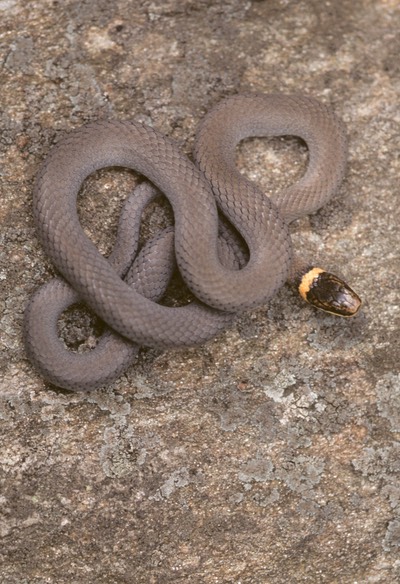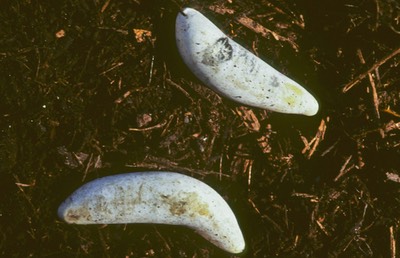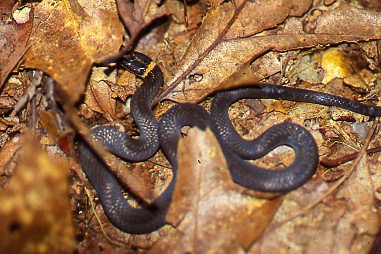
Ringneck. A properly named animal!
The very first ringneck I ever saw was a hatchling, dead, in a spider web in our cellar entry. The adults are small, slender animals that can wedge themselves beneath narrow spaces, aided, no doubt, by their relatively flat head.
This snake is common on forested hillsides where talus slope of rocks exist. Ringnecks can be found on the surface rarely, but turning a few dozen flat rocks will usually reveal their presence — at least in spring. You are likely to see the openings to ant chambers where the snakes are found. If you turn the same rock in mid summer, there will be hundreds of ants and their pupae, but no snake. In the fall and next spring, the snakes will be there while the ants have retreated beneath the surface.

Ringneck eggs are unusual. They are soft, very pliable, and funny shaped. Only once did I find a group of five under a rock next to an old house foundation. Hatchlings look just like adults.
In general, Ring-necked snakes appear to be food specialists on Red-backed salamanders, though they are known to eat a wide variety of food items. Even hatchlings go after them (and even their parts — like a released tail). Our Ringneck possesses a special venom-like gland that may have toxic qualities to it. Western ring-necked species do have enlarged rear teeth in the upper jaws that aids in delivering this venom to prey (some much larger than the snake itself), but our local ring-neck lacks this adaptation.

Ringneck underside.


